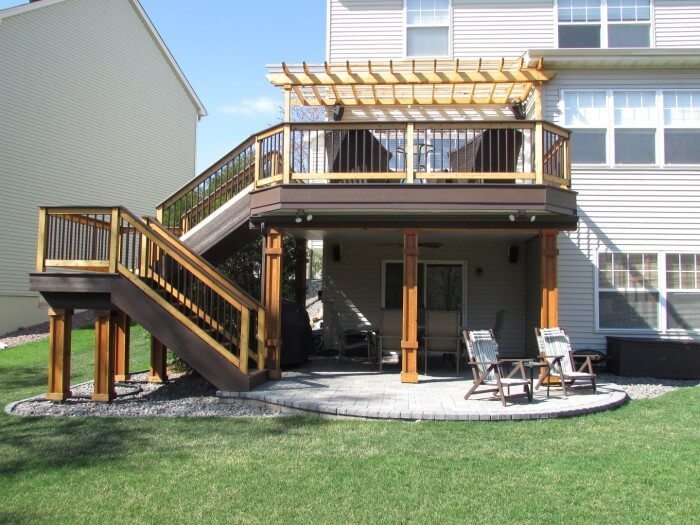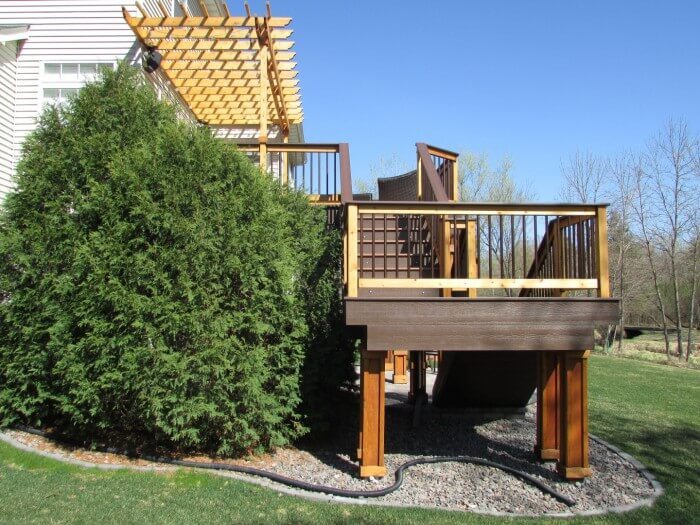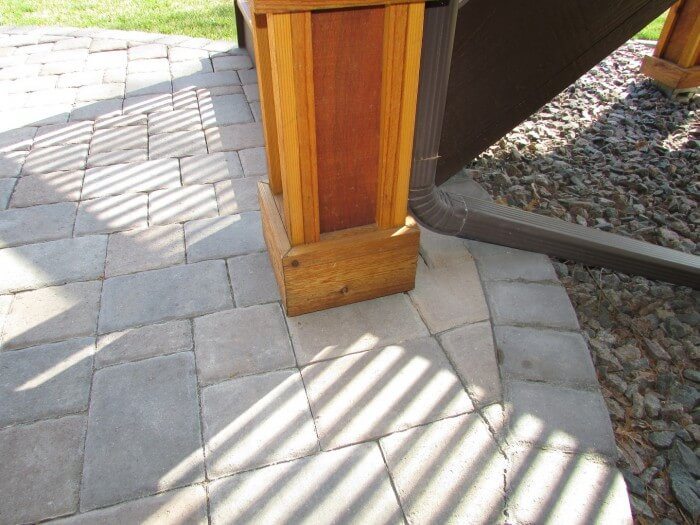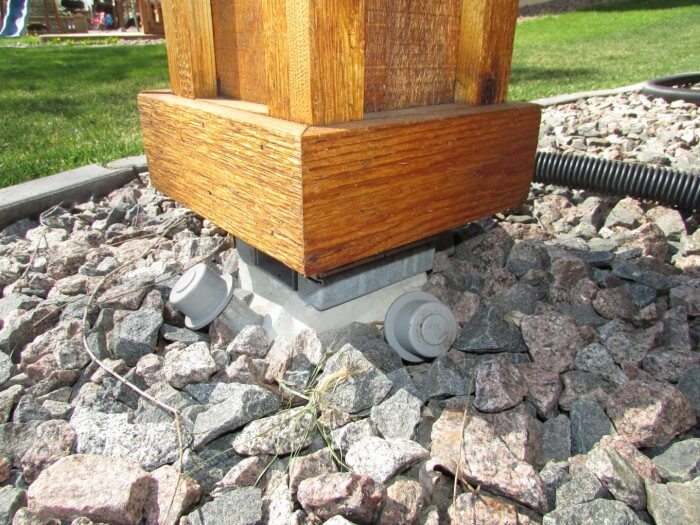It has already been two years since I first blogged about Diamond Pier® Foundation Systems. Where does the time go? In my original post on Diamond Piers back in 2013, I talked about how my neighbors were having a deck constructed with Diamond Piers, and I said I’d try to revisit this topic each year to track the performance of their deck.
I completely forgot about that until I re-read the original post just recently, because I’m probably going to have a deck added onto my own house this year, and I intend to have Diamond Piers used for the footings instead of traditional concrete footings.
In short, Diamond Pier footings are a pin foundation system. A Diamond Pier is a chunk of concrete with four holes in it, through which long steel pins are driven into the ground. They’re far faster and easier to install than traditional concrete footings, and they’re more resistant to frost heave than traditional footings. The short video clip below shows how they work:
Last winter was a pretty bad year for frost heave. It got really cold and there was very little snow cover to act like insulation, which caused a lot of decks and porches to heave. So how’d my neighbor’s deck hold up? Perfectly.
Post update 6/29/17: the deck is still plumb and level. No frost heave.
Post update 5/08/18: the deck is still plumb and level. No frost heave.
Surprisingly, there doesn’t seem to be a whole lot of decks being built in Minnesota using Diamond Piers. I don’t have any statistics, but just based on my experience, these things haven’t even put a dent in the market. My best guess is that people aren’t aware of the product, or they assume Diamond Piers are more expensive, but they’re not.
According to the guys at All Around, the average installed price for a traditional 18″ concrete footing is the same as the installed price for a DP-50, which is the equivalent of an 18″ footing.
Diamond Piers are superior in performance and they’re far faster and easier to install. They cost more than a traditional concrete footing, but the installed cost is the same when factoring in the price of labor. So why aren’t more folks using them? I have to assume they just don’t know about them. Click this link for a list of lumber centers throughout Minnesota that sell Diamond Piers.
Post update 5/21/15: I received an email from a reader last night asking for a link to an independent study or data showing how this product works and performs. I’ve posted all of these links already, but perhaps it would be helpful to have them all in one place. Here they are:
- ESR-1895 – the document code officials can use to approve this product.
- Code compliance info for Minnesota – an explanation of exactly how building officials can approve this product for Minnesota.
- Frost Performance Report – an independent engineering report, as well as numerous case studies in Minnesota.
- More links at Diamond Pier’s web site





Are Diamond Pier footings approved for decks in Minnesota? Answers from the 20 largest cities. | Structure Tech Home Inspections
May 12, 2015, 4:23 am
[…] week I posted an update on Diamond Pier footings, and since then I’ve had a number of people ask me whether or not Diamond Pier footings are […]
Ryan
May 23, 2015, 5:23 am
I skipped the diamond piers and went for helical piers. I live in maple grove and have the worst clay soil walkout lot to a pond. My whole back yard moves up and down 2-4 inches in the winter. Diamond piers would have moved with it.
Nick W.
June 16, 2015, 9:30 am
Those “hand rails” would not be legal in my neck of the woods.